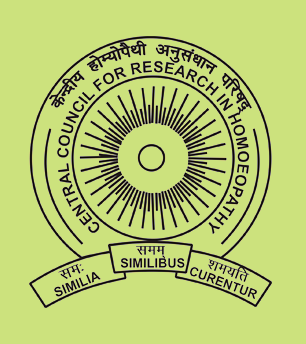Indian Journal of Research in Homoeopathy
Keywords
Calcarea salts, Homoeopathic remedies, Learning disability
Article Type
Original Article
Abstract
Aims: The objective of the study was to assess the therapeutic usefulness of Homoeopathy in the management of LD, viz., dyslexia and dysgraphia, to ascertain the role of homoeopathic medicines and verify their characteristic symptoms in the management of various types of LD to establish verified characteristic symptoms of medicines used in the management of various types of LD. Settings and Design: A 3-year randomised double blind case control study was carried out on 67 children between ages 8-12 years fulfilling the criteria of LD (ICD-10) for dyslexia and dysgraphia with a minimal observation period of one year. The study was conducted in three Marathi-medium schools in Mumbai. Material and Methods: 67 children between ages 8-12 years fulfilling the criteria of LD (ICD-10) for dyslexia and dysgraphia were studied for a minimal observation period of one year. All received remedial education as it is the standard mode of management. 32 children constituted Group I and were administered the indicated homoeopathic medicine in the 200 th potency in infrequent repetition while 35 children from Group II were given placebo. The children and the Remedial Educators who were the assessors were blinded for the study. Statistical Analysis Used: t-test was done for statistical analysis. Results: The children under homoeopathic treatment with remedial education showed an early response to remedial inputs and a statistically significant change in the indicators of dyslexia and dysgraphia. There was also a significant change in the co-morbid behavioural condition notably Attention Deficit Hyperactivity Disorder (ADHD). The study not only helped verify the characteristic symptoms of the remedies from Materia Medica useful in LD but also was able to report clinical symptoms which have not been reported in source books. 53.12% of children needed Calcarea salts. The other significant remedy indicated in 9.3% children was Medorrhinum, Argenticum nitricum, Calc-flour, and Natrum salts were indicated in 6.25% children. Conclusion: Homoeopathic intervention when combined with standard remedial education has a definite role in bringing about an early change in all parameters of LD. It also assists in bringing about a change in treating the co-morbid conditions, commonly Attention Deficit Disorder (ADD/ADHD). The improvements started simultaneously in most of the areas except in speed of reading and reading comprehension, repetition in reading and omission of punctuation in writing.
Digital Object Identifier
10.4103/0974-7168.135641
Publisher
Wolters Kluwer India Pvt. Ltd.
How to cite this article
Dhawale K, Tamboli M, Katawala M, Tambitkar N, Tamboli P. Use of homoeopathic remedies in the management of learning disabilities. Indian J Res Homoeopathy 2014;8:87-94. doi: 10.4103/0974-7168.135641

- Citations
- Citation Indexes: 4
- Policy Citations: 2
- Usage
- Abstract Views: 830
- Downloads: 448
- Captures
- Readers: 14


